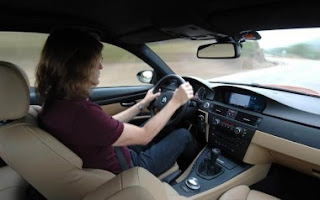“With conventional systems, every person whose line of vision is to be monitored has to complete more or less time-consuming preparations. Because every head, every face, every pair of eyes is different,” notes Prof. Husar of the IDMT.
The system doesn’t require a PC or a laptop either. “Since the Eyetracker is fitted with at least two cameras that record images stereoscopically – meaning in three dimensions – the system can easily identify the spatial position of the pupil and the line of vision,” according to Husar.
The information is fed out through a standard interface and is stored in a standard interface (USB, CAN). This way, the Eyetracker can be connected directly to the car’s trip computer.
If the camera modules detect that the eye is closed for longer than a user-defined interval, it sounds an alarm. The cameras evaluate up to 200 images per second to identify the line of vision, even when a driver’s head moves to the left or right.
There are a host of applications for the Eyetracker. In medicine, the camera system can assist with eye operations by registering a patient’s every eye movement. With this technology, players of computer games can also look around themselves, without requiring a joystick to change their viewing direction.
It is also a valuable tool for marketing and advertising researchers with an interest in determining which parts of a poster or advertising spot receive longer attention from their viewers.
Researchers will be on hand at the VISION trade fair in Stuttgart to show how eyetracking works in the field. From November 9 through 11, visitors can see the Eyetracker in action in Hall 4, Stand C72. (Znews)
